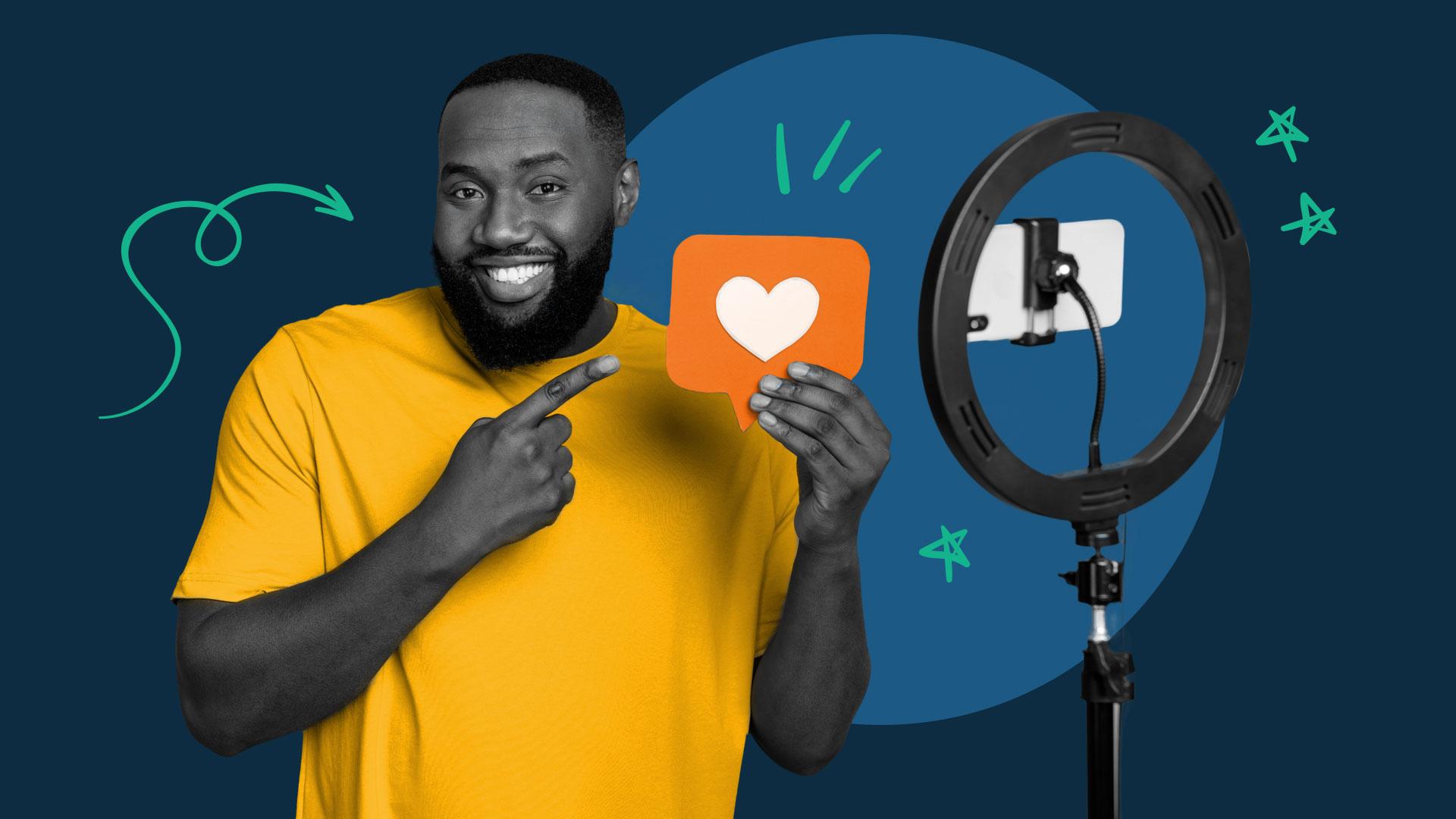Are you, perhaps, trying to figure out the best way to get your brand noticed? It's a question many businesses ask these days, especially with so many ways to reach people. There's a big discussion happening, a kind of ultimate showdown, between influencer marketing and what we call traditional advertising. This conversation, you know, really aims to help you find insights that could change how you approach getting your message out there.
For a long time, businesses relied on familiar methods to share their story and products. Think about the advertisements you used to see on television, hear on the radio, or read in newspapers and magazines. Those methods, quite simply, were the main ways to tell a lot of people about something. Now, though, there's a different kind of voice making itself heard, and it’s getting louder.
This newer approach, influencer marketing, uses people who have built a following online. These are individuals who, in a way, have gathered an audience around topics they care about. They share their thoughts, their lives, and sometimes, products or services, with people who trust them. It’s a different kind of reach, one that, perhaps, feels more personal to many.
Table of Contents
- The Core Difference: How They Work
- Strengths and Weaknesses: A Closer Look
- The Numbers Speak: Growth and Impact
- Measuring Success: Beyond Just Reach
- Who is an Influencer, Anyway?
- Making the Choice: Which Strategy for Your Brand?
- Frequently Asked Questions About Marketing Strategies
The Core Difference: How They Work
When we look at these two ways of getting a message out, we see they operate on very different ideas. Traditional advertising, you know, casts a very wide net. Influencer marketing, on the other hand, focuses on connections and trust. It’s like comparing a megaphone to a personal conversation, in a way.
What is Influencer Marketing?
Influencer marketing, basically, uses the popularity of social media personalities. These people, who have a strong presence online, promote products or services. It's about leveraging their voice, their platform, and the trust they have built with their followers. You might see someone you follow on Instagram showing off a new product, or a YouTube creator talking about a service they use. This approach, honestly, feels very different from a typical commercial.
This type of marketing, you know, really started with early celebrity endorsements. Think about famous actors or athletes appearing in commercials. But it really took off with the rise of social media platforms. Instagram, TikTok, and YouTube, for example, gave everyone a chance to build an audience. So, it's not just big stars anymore; it's also everyday people who have become trusted voices in their niches. They, quite simply, connect with their audience in a very direct manner.
An influencer, to put it simply, is someone who can affect the purchasing decisions of others. This is because of their authority, their knowledge, or their relationship with their audience. They are, you know, people who inspire or guide the actions of others. It's about generating interest in something through their personal recommendation. They build trust, and that trust, you see, is very valuable to brands.
These individuals, too, interact with their followers regularly. They build trust over time through consistent content. Often, they team up with brands for sponsorships, product promotions, or other partnerships. While the number of followers they have matters, the real connection and engagement they foster are, quite honestly, what truly counts for a brand. It’s not just about how many eyes see something, but how many people truly listen.
What is Traditional Advertising?
Traditional advertising, by contrast, involves advertising on television, radio, print media, and billboards. These are the classic ways to reach a mass audience. You’d see a full-page ad in a newspaper, or hear a catchy jingle on the radio during your commute. These methods, in some respects, have been around for a very long time. They are familiar ways to get a message out.
This type of marketing relies heavily on reach and frequency. The idea is that if enough people see or hear your ad enough times, it will stick in their minds. It's about getting your brand name out to as many eyes and ears as possible. Think of a prime-time TV commercial; it’s designed to hit a very large audience all at once. It's a broad approach, really, to brand awareness.
Traditional methods, you know, often involve a one-way communication flow. A brand sends out a message, and the audience receives it. There isn't much opportunity for immediate feedback or interaction directly with the advertisement itself. It’s a very different dynamic compared to, say, someone leaving a comment on an influencer’s post. That, you see, is a key distinction.
Strengths and Weaknesses: A Closer Look
Both of these marketing strategies have their own good points and their own challenges. Understanding these can help you decide which path, or combination of paths, makes the most sense for your business. It's not always a clear-cut choice, you know, between one or the other.
Advantages of Influencer Marketing
One of the big advantages of influencer marketing is its authenticity. People tend to trust recommendations from individuals they follow more than they trust traditional ads. This trust, you know, can lead to higher engagement. We see metrics like likes, shares, comments, and direct interactions as key indicators of success. It's a more personal connection, in a way.
Influencer marketing also allows for very targeted reach. If your product appeals to a specific group, you can find an influencer whose audience matches that group exactly. This means your message goes directly to people who are already interested in what you offer. It’s a very efficient way, honestly, to connect with potential customers. This focus, you know, can really make a difference.
The "why influencer marketing works" is undeniable for many businesses. It often leads to better brand visibility within specific communities. When an influencer talks about your product, their followers pay attention. This can translate into real interest and, ultimately, sales. It's a powerful tool, really, for building a loyal customer base. You know, it just connects differently.
Another benefit is the ability to generate user-generated content. When an influencer promotes a product, their followers often share their own experiences. This creates a ripple effect of organic content that further boosts your brand’s presence. It’s a very natural way, you see, for people to talk about what you offer. This kind of chatter, you know, is priceless.
Disadvantages of Influencer Marketing
Despite its strengths, influencer marketing does have some challenges. Finding the right influencer can be a bit of a process. It’s not just about follower count; it’s about finding someone whose audience truly aligns with your brand values and product. A mismatch, you know, can lead to ineffective campaigns. It takes careful research, really.
There's also the potential for inauthenticity if not managed well. If an influencer promotes too many products, or products they don't genuinely use, their followers might lose trust. This can, in a way, hurt both the influencer's credibility and your brand's image. Maintaining genuine connections is, quite simply, very important. It's a delicate balance, you know.
The cost of influencer marketing can vary quite a lot. Some top-tier influencers might charge significant fees, which could be a barrier for smaller businesses. While micro-influencers often offer more affordable options, managing many smaller collaborations can, you know, take up a lot of time. It’s a budget consideration, honestly, that every business must think about.
Measuring direct return on investment (ROI) can also be a little tricky sometimes. While you can track likes and shares, linking those directly to sales can require sophisticated tracking tools. It’s not always as straightforward as, say, tracking clicks on a digital ad. You know, you really have to dig into the data.
Advantages of Traditional Advertising
Traditional advertising, for all its older ways, still has strong advantages. It offers a very broad reach. A television commercial during a popular show, for example, can reach millions of people at once. This mass appeal is, you know, excellent for building general brand awareness. It gets your name out there to a huge audience, very quickly.
These methods are also very established. People are familiar with them, and they often carry a sense of legitimacy. A brand advertised on a major TV network, for instance, might be seen as more reputable. This familiarity, you see, can build trust with a wide audience over time. It’s a proven way, honestly, to create a presence.
Traditional advertising can be very effective for certain types of campaigns. If you have a product that appeals to nearly everyone, like a household item, broad reach is exactly what you need. It’s about making sure your brand is top-of-mind for a general consumer base. This kind of wide exposure, you know, can really make a brand a household name.
Also, the impact of a well-produced traditional ad can be quite memorable. Think of iconic Super Bowl commercials that people talk about for years. These ads, too, can create a lasting impression and shape public perception of a brand. They have a certain gravitas, you know, that can be hard to replicate elsewhere.
Disadvantages of Traditional Advertising
One of the main disadvantages of traditional advertising is the lack of direct interaction. As mentioned, it’s mostly a one-way street. There's no immediate way for consumers to ask questions or give feedback directly on the ad itself. This can make it harder, you know, to build a two-way relationship with your audience. It's less conversational, in a way.
The costs for broad reach in traditional advertising can be very high. Buying prime-time TV slots or large billboard spaces often requires a substantial budget. This makes it, you know, less accessible for small and medium-sized businesses. It’s a significant investment, honestly, that might not always be feasible for everyone.
It can also be difficult to target specific audiences with traditional methods. A TV ad, for example, reaches everyone watching that channel, regardless of whether they are your ideal customer. This can lead to wasted ad spend on people who are not interested in your product. It’s less precise, you see, than digital targeting. You know, you're hitting a lot of people who aren't your core audience.
Measuring the direct ROI from traditional advertising is often less precise compared to digital methods. While you can track viewership numbers or circulation, linking those directly to sales can be challenging. It requires, you know, more indirect methods of measurement. This can make it harder to justify the expense to some business owners. It's not as clear-cut, really, as some other methods.
The Numbers Speak: Growth and Impact
The clash between influencer marketing and traditional advertising has been a topic of ongoing discussion. Both strategies have their merits, but the undeniable rise of influencer marketing really tells a story. We saw this market grow from $1.7 billion in 2016 to a remarkable $21 billion in 2023, according to Statista. That, you know, is a massive jump in a relatively short time.
This growth, too, highlights a shift in consumer behavior. People are spending more time on social media platforms, and they are increasingly influenced by the content creators they follow. This trend, honestly, shows no signs of slowing down. Businesses are recognizing this shift and allocating more of their marketing budgets to these newer channels. It's a clear signal, you see, of where attention is moving.
While traditional advertising still holds a significant share of the market, the rapid expansion of influencer marketing indicates its growing effectiveness. It suggests that for many brands, especially those targeting younger demographics, this approach is driving very real results. The battle between influencer marketing vs traditional marketing continues, but why influencer marketing works is undeniable for many businesses looking to connect in a personal way.
Looking ahead to 2025, it's clear that understanding these trends is very important. Businesses want to know which strategy drives better results, boosts brand visibility, and increases ROI. The data, you know, points towards a future where personal connections play an even bigger role in marketing success. This research, quite simply, aims to provide a comprehensive comparison by analyzing their effectiveness, return on investment, and consumer impact.
Measuring Success: Beyond Just Reach
The way we measure success differs significantly between these two approaches. Traditional advertising, as we discussed, relies on metrics like reach and frequency. It's about how many people saw your ad and how many times they saw it. This is a very broad way, honestly, to gauge exposure. It tells you about the potential audience, in a way.
Influencer marketing, by contrast, thrives on more interactive metrics. We look at things like likes, shares, comments, and direct interactions. These metrics, you know, show how engaged an audience is with the content. They indicate a deeper level of connection than just viewing an ad. It’s about active participation, really, from the consumer.
This difference in measurement reflects a fundamental difference in goals. Traditional ads aim for broad brand recognition. Influencer campaigns often aim for deeper engagement and conversion through trust. For businesses, comparing influencer and traditional marketing strategies means looking beyond just how many people you reach. It’s about how those people respond. You know, it’s about quality over just quantity.
Discovering which strategy yields better results for your business means looking at your specific goals. If you want a quick surge in brand awareness across a wide demographic, traditional might be your path. If you seek authentic connections, higher engagement, and direct conversions within a niche, influencer marketing could be the answer. It’s about what drives better brand growth in today’s digital age, you see.
Who is an Influencer, Anyway?
We've talked a lot about influencers, but what does that term really mean? An influencer is someone who has the ability to affect the purchasing decisions of others. This is because of their authority, their knowledge, their position, or their relationship with their audience. The meaning of influencer, you know, is simply one who exerts influence. They are a person who inspires or guides the actions of others.
An influencer, essentially, is a social media professional. They have built a sizable following around a relevant topic or niche. Because of this, they can influence their followers to take an action, thanks to their established credibility. The influencer is the individual whose effect on the purchase decision is, in some way, significant or authoritative. They are, quite simply, trusted voices.
These individuals interact with their followers regularly. They build trust through consistent content and genuine engagement. Often, they team up with brands for sponsorships, product promotions, and partnerships. While follower count matters, the real connection and trust they have with their audience are, honestly, what truly makes them effective. It’s about the quality of the relationship, you know, not just the numbers.
Discover what an influencer really is, why they’re essential for brands, and how to become one yourself. You can learn from thousands of campaign insights to start your journey. It’s a field that, too, continues to grow and change. Understanding these key figures is, quite simply, vital for modern marketing. You know, they really are a new kind of media channel.
Making the Choice: Which Strategy for Your Brand?
Wondering whether influencer marketing or traditional advertising is the right choice for your brand? It’s not always an either/or situation. Many businesses find success by combining both strategies. The best approach, you know, depends on your specific business needs, your target audience, and your overall marketing goals. It’s about finding what works best for you.
You need to compare influencer marketing and traditional advertising to understand their pros and cons for your unique situation. Consider who you are trying to reach. If your audience spends a lot of time on social media and values personal recommendations, influencer marketing might be very effective. If your product has broad appeal and you need widespread recognition, traditional methods could be more suitable. It’s a matter of alignment, really.
Learn which strategy suits your business needs and how to implement it effectively. Discover the strengths and weaknesses of influencer marketing vs traditional marketing and determine which strategy is best for your business. For example, a new, niche product might benefit greatly from an influencer who can speak directly to a passionate community. A well-established brand launching a mass-market product, too, might still find value in a national TV campaign. You know, it really just depends.
The goal is to discover which strategy drives better results, boosts brand visibility, and increases ROI. This research aims to provide a comprehensive comparison by analyzing their effectiveness, return on investment, and consumer impact. Ultimately, the choice comes down to understanding your brand, your audience, and your budget. You can learn more about marketing strategies on our site, and find more insights on our marketing insights page.
Frequently Asked Questions About Marketing Strategies



Detail Author:
- Name : Clemmie Hansen
- Username : elisha.boyer
- Email : robyn92@hotmail.com
- Birthdate : 1989-04-08
- Address : 525 Jamir Valleys New Allie, MA 05946
- Phone : (920) 806-9044
- Company : Hills LLC
- Job : Drywall Installer
- Bio : Placeat quis repudiandae eveniet aperiam laboriosam. Odio corrupti temporibus omnis velit magnam temporibus optio veniam. Recusandae et laborum cupiditate ea.
Socials
facebook:
- url : https://facebook.com/bradtkem
- username : bradtkem
- bio : Quis suscipit tempora fugit a magni aut et.
- followers : 4169
- following : 2833
tiktok:
- url : https://tiktok.com/@bradtke1975
- username : bradtke1975
- bio : Ea enim dolor quos laborum ad impedit. Ut maiores expedita qui dolorem.
- followers : 5051
- following : 1804
linkedin:
- url : https://linkedin.com/in/martin_bradtke
- username : martin_bradtke
- bio : Quisquam accusamus rerum aut sed dolorem.
- followers : 4747
- following : 78